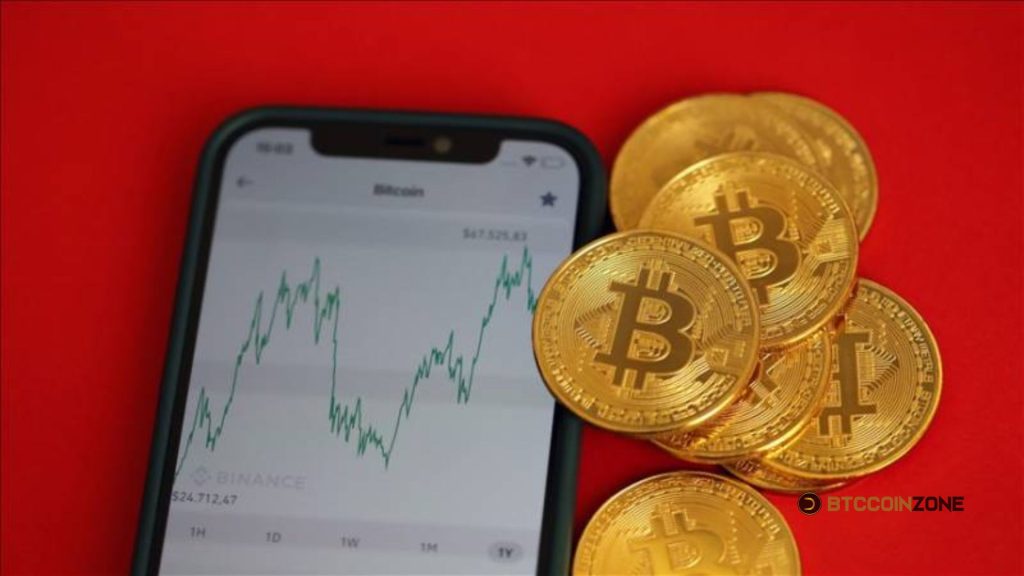Bitcoin As Digital Gold: The Recent Crypto Selloff Price?

Bitcoin As Digital Gold: The “digital gold” of the cryptocurrency industry, has solidified its position as a market leader. Its decentralization, limited supply, and resistance to inflation make it an attractive store of value, similar to gold. Recent crypto selloffs have brought Bitcoin’s volatility into the spotlight, prompting questions regarding the cryptocurrency’s stability and prospects. In light of these selloffs, this paper examines Bitcoin’s status as digital gold and assesses its potential as an alternative asset in the dynamic financial market.
The Concept of Bitcoin as Digital Gold
The name “digital gold” perfectly captures Bitcoin’s main selling point: it provides an alternative to gold and other conventional precious metals that have long been used as money. Both resources are similar in many ways:
- Scarcity: Gold is a finite resource, and Bitcoin’s supply is capped at 21 million coins, which means no more than that amount will ever exist. This scarcity is a driving force behind both assets’ value.
- Store of Value: Investors seek gold during economic instability because it retains value. Similarly, Bitcoin is viewed as a store of value that can hedge against currency devaluation and inflation.
- Decentralization and Independence from Governments: Gold’s value is not directly tied to any government or central bank. Bitcoin takes this further by being decentralized—its network runs on a peer-to-peer protocol without intermediaries like central banks or regulatory bodies.
Cryptocurrency is relatively new and has a lot of room for error, in contrast to the long-established steadiness of gold. The latest selloffs have shown how volatile it is, which has prompted both hope and doubt about its status as digital gold.
The Recent Crypto Selloff: What Happened?
The price of Bitcoin has fallen from its all-time high due to the massive selloffs that have occurred in the cryptocurrency market in the past several months. Several things led to this steep fall:

Macroeconomic Factors
Concerns about inflation, interest rate hikes, and geopolitical unrest have caused worldwide financial markets to be volatile. Cryptocurrencies like Bitcoin were among the riskier assets that saw a widespread selloff as investors sought safer alternatives in the face of economic uncertainty. Speculative assets hit when central banks, like the Federal Reserve in the United States, increased interest rates to fight inflation. Many investors view Bitcoin as a high-risk asset, which hurts its price, even though some perceive it as digital gold.
Regulatory Concerns
Further adding to the market’s unpredictability is the prospect of regulatory crackdowns, especially in nations like China. Due to China’s persistent attempts to restrict cryptocurrency mining and transactions, Bitcoin’s demand has dropped, and mining operations have moved to other regions. In addition, authorities around the world, particularly in the United States and Europe, are looking more closely at the cryptocurrency market. The demand for more stringent restrictions has contributed to the selloff, as have concerns about consumer safety, AML compliance, and the possibility that digital assets could threaten financial stability.
Institutional Behavior
While institutional investors were crucial to Bitcoin’s ascent, they were also involved in the latest selloff. As Bitcoin became more institutionalized, there was a direct correlation between it and the wider financial markets. The price drop was worsened when significant funds, corporations, and institutional traders sold off their cryptocurrency holdings in reaction to the unstable market.
Crypto Market Sentiment
Market mood significantly impacts Bitcoin’s value, as it does on most cryptocurrencies. Panic selling, in which investors dump their assets to cut their losses in the event of more reductions, is a possible explanation for the selloff. Because more people will be fleeing the market simultaneously due to herd mentality, which is common in unstable markets, the selloff can happen faster.
Effects of Stablecoins and Crypto Lending
Stablecoins and crypto loan services have substantially impacted the cryptocurrency ecosystem, especially during market turbulence. A stablecoin links its value to a fiat currency like the US dollar to sustain its worth relative to other cryptocurrencies. Like TerraUSD’s de-pegging, their demise shattered investor faith and caused massive cryptocurrency market selloffs. After losing faith in stablecoins, many questioned the longevity of crypto assets, prompting an analysis of their architecture.
Crypto lending platforms enable consumers to borrow against their Bitcoin assets or earn interest on deposits. Stablecoin failures caused lending sites to lose liquidity, causing customers to cease withdrawals or liquidate positions. Bitcoin price volatility rose, and this chain reaction uncovered systemic issues in decentralized finance (DeFi). Stablecoins and lending platforms have caused problems, prompting calls for more cryptocurrency regulatory oversight and risk management.
Bitcoin Price Movement: Recent Selloff Analysis
The steep decrease in bitcoin prices in 2024 was caused by a combination of reasons, including prior market dips and new ones. As worries about the state of the world economy grew, Bitcoin dropped below $25,000. Investors became uneasy due to inflation, increased global interest rates, and regulatory attention, particularly on bitcoin exchanges. As the price of Bitcoin continued to fall, institutional investors that had previously backed its ascent liquidated their holdings due to market risk aversion.
Worries about liquidity after the failure of big crypto loan platforms also contributed to the selloff by causing panic selling. The underlying features of Bitcoin, such as its limited quantity and growing popularity among the general public, are unaffected by this. As long as people are worried about inflation, Bitcoin has a history of recovering from slumps like these. Some analysts even anticipate that it will rebound this time. However, the fact that it was so unstable during the 2024 selloff shows how difficult it is to achieve stability as a store of value.
Historical Volatility of Bitcoin 2024
One of Bitcoin’s defining features, its historical volatility, is still present in 2024. The value of Bitcoin has gone through wild swings since its start, with quick increases and then sharp decreases. This volatility continued in 2024 when Bitcoin’s price increased and fell sharply due to both general economic trends and issues unique to the cryptocurrency sector. Bitcoin has proven its tenacity by recovering from significant selloffs in prior years, including the crash of 2017–2018 and the correction of 2021–2022.
Liquidity worries caused by stablecoin ecosystem breakdowns and crypto lending platform issues, together with increasing regulatory demands, have contributed to the 2024 volatility. Despite these setbacks, Bitcoin’s promise as digital gold has kept investors interested. While its wild price swings worry some, they are just a tiny part of the allure of cryptocurrency, where high risk often pays off handsomely for individuals prepared to ride out the storm.
Bitcoin’s Future as Digital Gold
The underlying value of Bitcoin has not diminished, even though it has just experienced a decline. Governments, fintech companies, and institutional investors are all interested in cryptocurrency, which bodes well for its future as a global asset. When other Bitcoin-related financial instruments, such as Bitcoin ETFs, come to market, Bitcoin may become increasingly integrated into mainstream finance.

When the market is ready, Bitcoin can function as digital gold. If it stabilizes and its volatility drops, more people may start to see Bitcoin as a safe-haven investment option. Still, there are many regulatory hurdles, market uncertainties, and technological obstacles to overcome on the way ahead.
In Summary
Bitcoin’s potential and complexity as a digital gold standard are intriguing. Even if recent selloffs have highlighted Bitcoin’s volatility. The cryptocurrency’s enticing features—scarcity, decentralization, and independence from existing financial systems—remain unaltered. As the world economy changes, Bitcoin will undoubtedly gain prominence in the financial sector. However, whether it can genuinely compete with gold as a secure store of value is still up in the air. As of right now, Bitcoin is just a digital asset for speculation. But it could change the way people save money in the digital Gold.
Also Read: Bitcoin Minetrix News and Mining Revolution Dawns




